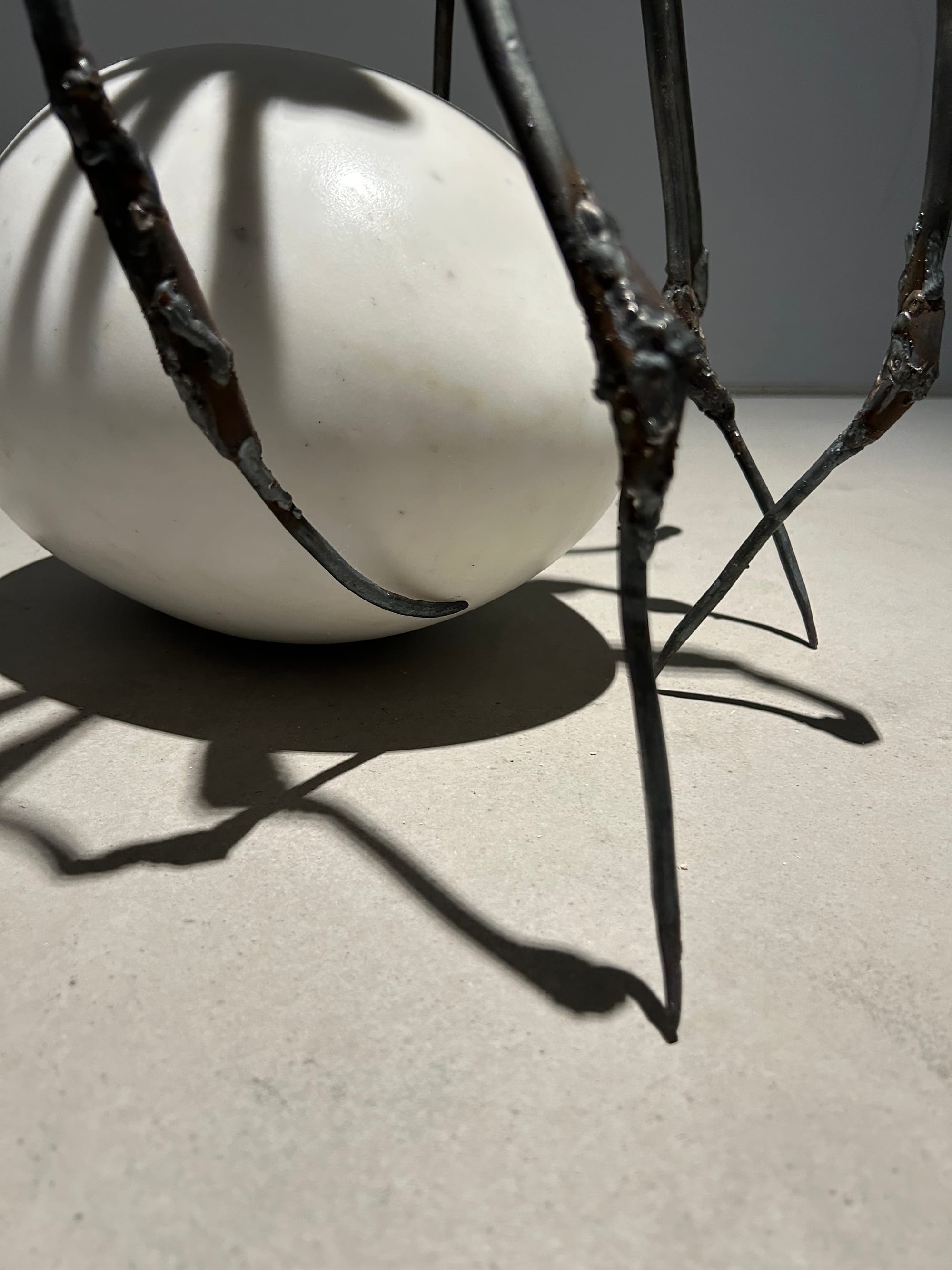Shorts: Peter Cook, LEGO, and Louise Bourgeois
Nostos is a weekly newsletter about making a home at the intersection of art and life. Shorts is a regular column with links and commentary on family culture.
Peter Cook’s Play Pavilion (Serpentine)
In a bit of serendipitous timing the Serpentine announced the launch of their new Play Pavilion the week that Hans Ulrich Obrist arrived in Taiwan for the first time for a few days of lectures, interviews, studio visits, and meetings with architects and collaborators. Intended to provide space and context for activities involving families and young people, the inaugural pavilion will commission Archigram’s Peter Cook (who also happens to have an exhibition at MoCA Taipei later this year) with the support of LEGO. This is something that I think every museum and perhaps every park should be doing: commissioning artists for playgrounds. (Indeed this is one of the imperatives of Nostos and one of the categories of projects we are pushing forward most urgently.)
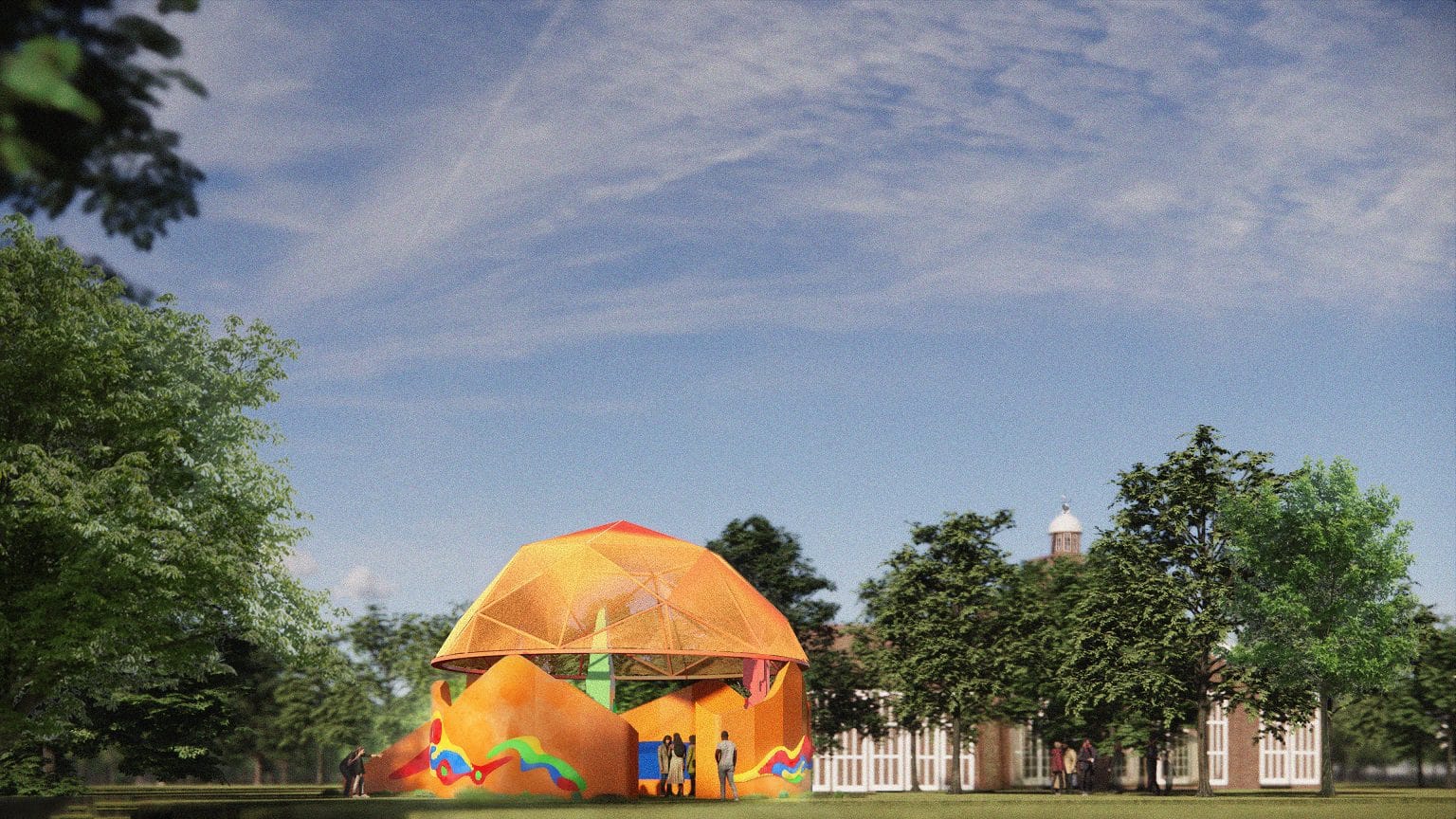
I think we are as direly in need of novel approaches to play as we are so desperately in need of new ways to engage with art. They can be permanent or temporary, they can be sculptural or interactive, they can be huge or tiny, they can even be fun or frustrating. In 2022, the Serpentine worked with Alvaro Barrington to build a basketball court in Bethnal Green, which he brilliantly referred to as a landscape painting. That year will probably be remembered as the high-water mark of social practice, which now appears to be shifting and evolving in response to the demands of our new political moment. This summer, Cook and LEGO together are an inspired choice for an initiation because LEGO is such a fundamentally metabolic, revisitable, plastic way of thinking through material. The Play Pavilion opens 11 June and I can’t wait to visit.
Louise Bourgeois (Fubon Art Museum)
Our first stop in Taipei last week was to Fubon Art Museum’s ongoing Louise Bourgeois exhibition “I have been to hell and back. And let me tell you, it was wonderful.” I first visited when it opened in mid-March, which turned out to be a highly araneidan week as we moved from the mid-sized spider in Taipei to the enormous one installed outside of Bangkok and finally to a diminutive one at a gallery show in Hong Kong. The exhibition in Taipei has traveled from the Mori Art Museum, where it was a slightly larger presentation. Exhibitions at the Mori are invariably installed with an enviable level of slickness: you’re dumped right in, then impelled onward through a combination of narrative and crowd flow, and finally extruded through the gift shop, where the merch is reliably excellent. Everyone I know now has “Hell and Back” either on a throw or on a hoodie. In Taipei the museum, which just opened last year, is exploring how its space can be used with each exhibition. The triumph of this show is the installation of Crouching Spider, the only work that can really make use of the architecture. FAM is essentially a Renzo Piano pavilion, open to the street with dynamic glass windows, and this nesting sculpture can take advantage of that relationship between inside and out to a powerful degree. I imagine we’ll see more of that kind of dramatic use of the space in the future.
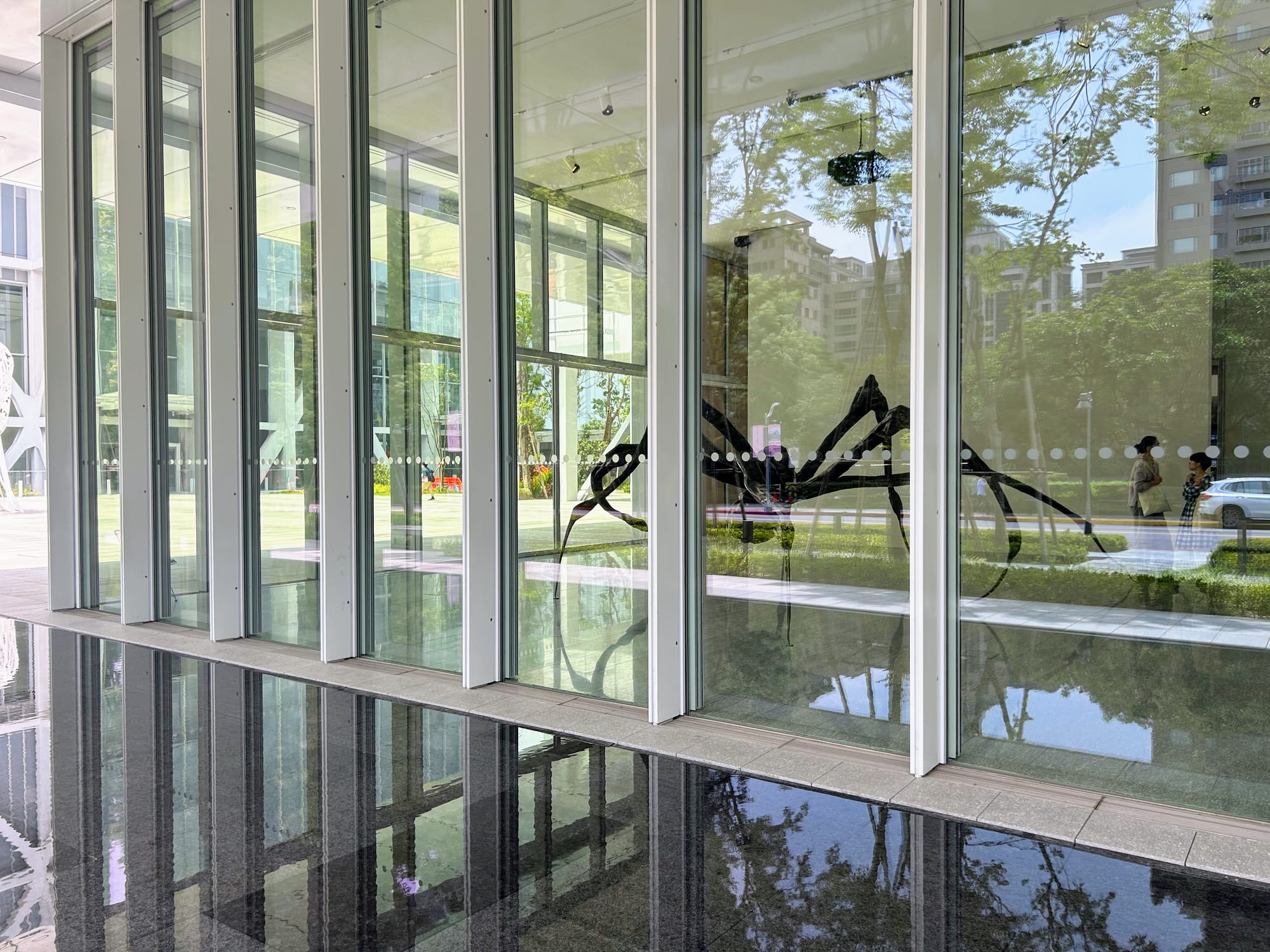
The second spider of that week was the epic Maman installed at Khao Yai Art Forest a few hours outside of Bangkok. (I say second but of course there were multiple other spiders at Fubon as well, including the excellent 1997 version crouching over a cage.) It is truly one of the great experiences of public art wherever you encounter it, whether in Tokyo or outside Seoul (or Arkansas or Ottawa, though I haven’t had the pleasure). Originally commissioned for the Turbine Hall—the first work to occupy that space—it will be returning to the Tate Modern next month to mark its 25th anniversary. Context is everything, and in Khao Yai the spiritual dimension is activated to particular effect, part of a day-long trail through secondary forest and blazing sun that also includes the rewilding stupa fragments of Ubatsat and a mesmerizing fog by Fujiko Nakaya. Here you can put your back to the ground, your hand to the bronze, and squint up at the marble eggs against the sky with just the sounds of wind and insects and a little laughter.
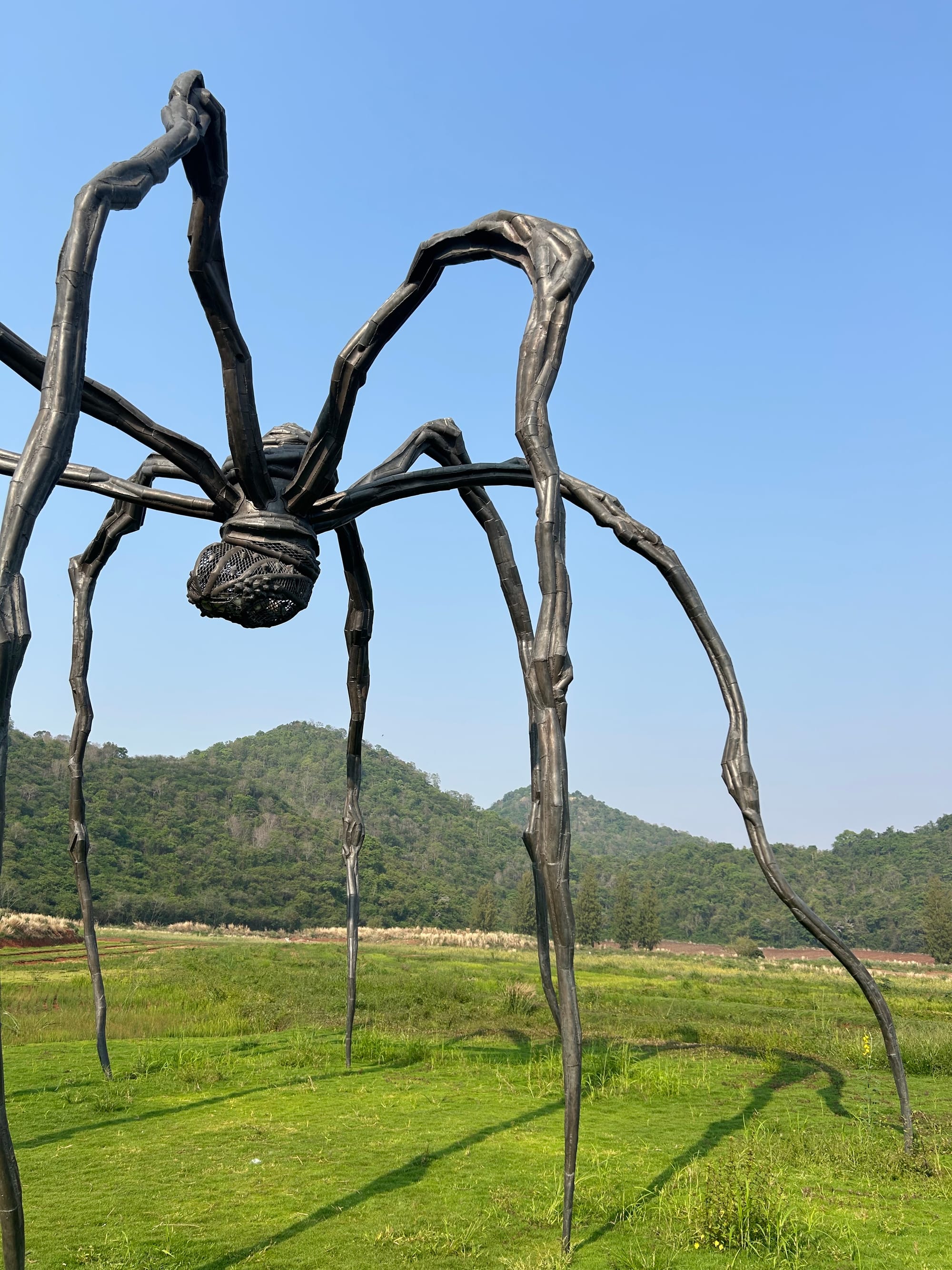
But my favorite spider was probably this delicate little one in a corner of her show “Soft Landscape” at Hauser & Wirth in Hong Kong, which opened as we arrived there from Bangkok. All of the bronze spiders come in different textures and there are distinct preferences among collectors and curators: Maman is rough-hewn, almost industrial in its composition, while Crouching Spider is considerably more naturalistic, tense with twisted muscle. This tiny Spider falls somewhere between the two, with the welding marks of the former but also a bit more of the hand to it, its body with something of a Giacometti to it. What makes me tingle is the one limb that so tenderly cradles the ostrich egg with an effervescence of care and affection.
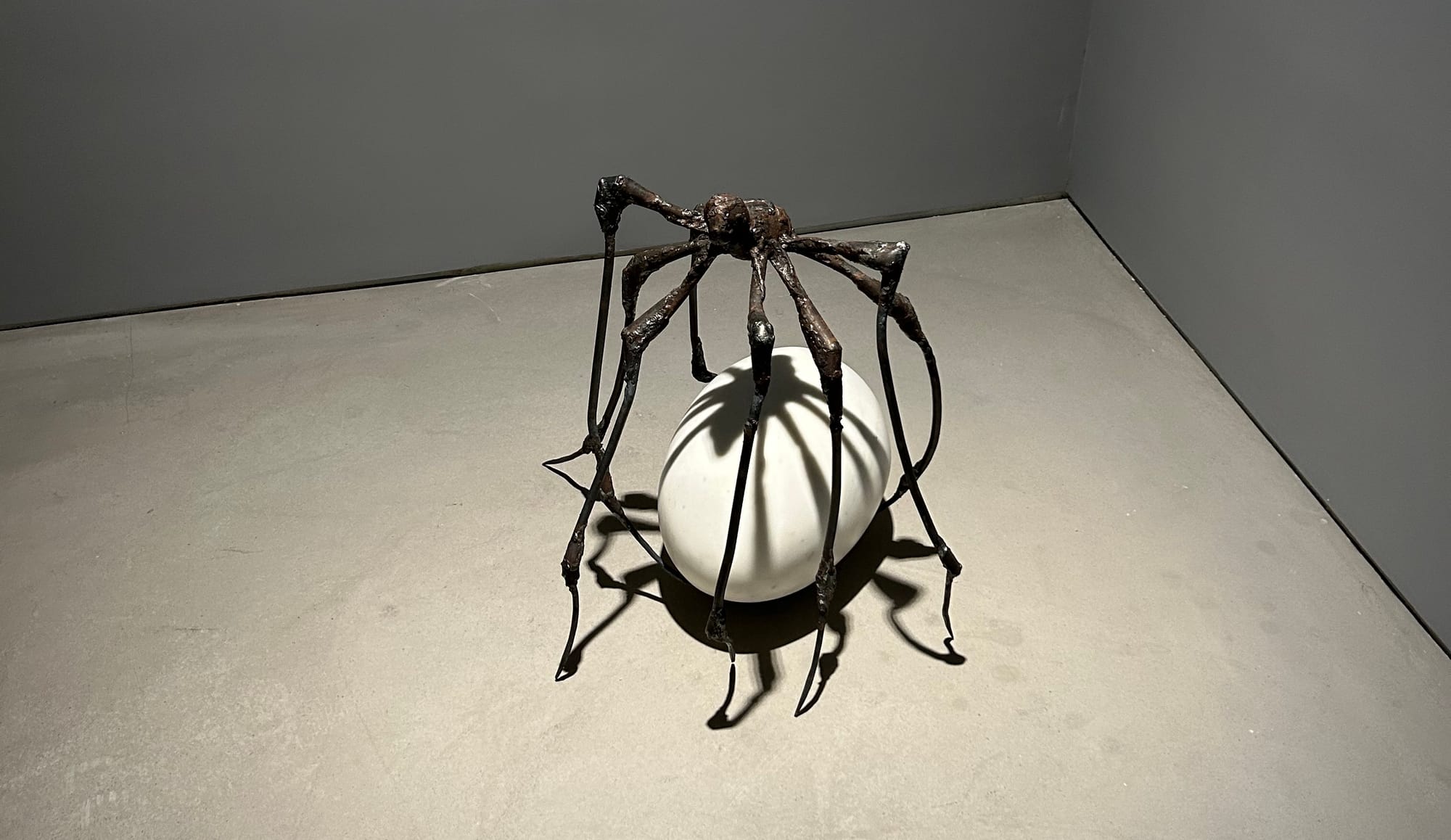
It is well known that Bourgeois ascribes to her mother/spider the qualities of creation, industriousness, and protection. Here we see that this nurturing is not a function of scale.
